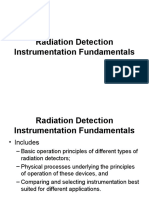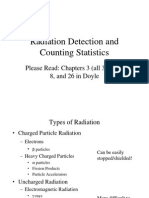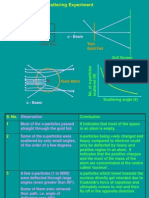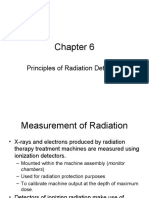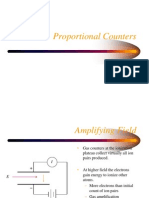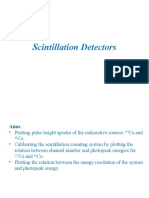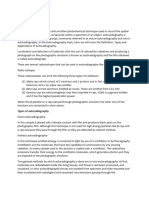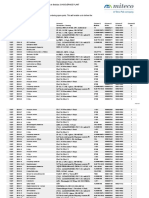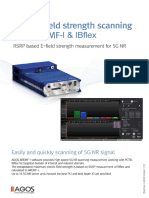0% found this document useful (0 votes)
110 views47 pagesRadiation Physics: PHY370 Physics Instrumentation and Application
The document discusses properties of ionizing radiation and radiation detection. It describes the types of ionizing radiation including alpha particles, beta particles, gamma rays, and x-rays. It explains how these radiations can cause ionization and their penetrating powers. The document outlines four main types of radiation instruments: portable radiation monitors, area radiation monitors, personal dosimeters, and monitors for internal radiation contamination. It provides details on how Geiger-Muller tubes and other common detectors work to detect ionizing radiation.
Uploaded by
aisyahCopyright
© © All Rights Reserved
We take content rights seriously. If you suspect this is your content, claim it here.
Available Formats
Download as PDF, TXT or read online on Scribd
0% found this document useful (0 votes)
110 views47 pagesRadiation Physics: PHY370 Physics Instrumentation and Application
The document discusses properties of ionizing radiation and radiation detection. It describes the types of ionizing radiation including alpha particles, beta particles, gamma rays, and x-rays. It explains how these radiations can cause ionization and their penetrating powers. The document outlines four main types of radiation instruments: portable radiation monitors, area radiation monitors, personal dosimeters, and monitors for internal radiation contamination. It provides details on how Geiger-Muller tubes and other common detectors work to detect ionizing radiation.
Uploaded by
aisyahCopyright
© © All Rights Reserved
We take content rights seriously. If you suspect this is your content, claim it here.
Available Formats
Download as PDF, TXT or read online on Scribd
/ 47








